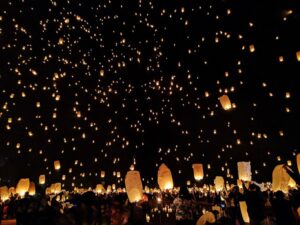More than 10 funny wedding traditions around the world.
Gathering together and celebrating two people who have managed to fall head over heels in love with one another is nothing new.
Humans have been having weddings and celebrating love for generations, but weddings are quite different than what they once were.
While we have progressed from a simple ceremony to a huge party, wedding traditions have stayed in people’s thoughts through every part of the planning.
But wedding traditions may not mean the same thing for everyone. Someone in California is likely to have different wedding traditions than say someone who was living in Paris.
Wedding traditions are unique and beautiful from all around the world, and if you’re marrying someone outside of your country or race it’s nice to include some of those traditions on your big day.
How absolutely beautiful that people from all over the world are falling in love! Having different ethnic backgrounds can add so much value to your relationship, so why not celebrate that on your wedding day.
Let’s talk about some popular wedding traditions from all over the world.
JAPAN
SAN SAN KU-DO
One of the oldest wedding traditions in Japan is San San Ku-do (meaning three- three- nine- times).
In Japanese culture, three is the luckiest and most promising number. But nine itself is an extremely lucky odd number, as it’s three times three.
San San Ku-do is a tradition where a couple will sip sake out of three cups three times.
Each cup represents a different thing, heaven, earth, and humankind.
As the couples sip each cup together, they are sharing that they are a union and will overcome life’s challenges together, no matter if their challenges are in heaven, Earth, or within humankind.
Others believe the cup to represent love, strength, and fertility.
Whatever you choose to stand by, this wedding tradition has been around for thousands of years and is a beautiful and lucky addition to your ceremony.
TEA CEREMONY
Wedding traditions involving your guests are so important, as these are the people who have supported and loved you through your entire relationship.
The Japanese Tea ceremony takes place after your guests have had their fill of dinner and sake.
They exit the room and everything is replaced with intricate tea details.
Each little detail is full of value, from the teacup itself to the plate it rests on. A
s your guests re-enter and bow, the first guest is then given a bowl of tea. Taking a sip and complementing the couple, the bowl is then wiped on the rim and passed along to the next guest.
Each guest has the honor of taking a sip of the tea.
While nothing is perfect, you’re choosing to stand through that imperfection together because life is beautiful.
This is such a unique outlook and thing to remember on your wedding day and this tradition gives us a true look into the incredible and peaceful Japanese culture.
KOREA
THE BRIDE DOES NOT WEAR WHITE
As opposed to many wedding traditions in the Western world, in Korea, the bride does not wear a white gown but instead wears an embroidered silk robe called a Hwarot.
Traditionally, the Hwarot is either green or red. This is supposed to represent the idea of ying and yang, bringing healing and enthusiasm into their marriage.
WEDDING DUCKS
A huge wedding tradition in Korea is the presentation of Mandarin ducks.
Mandarin ducks, unlike regular ducks, are believed to mate for life. While real-live Mandarin ducks used to be presented as a wish to get married, this has evolved into the tradition of gifting wooden Mandarin ducks as a part of the ceremony.
The Mandarin ducks wedding tradition symbolizes love, peace, fidelity, and offspring.
After the wedding day, couples take their ducks home and place them somewhere beak to beak.
If the ducks ever move and face away from each other, it often means that the couple is having a fight, while if they remain beak to beak they are harmonious in their relationship.
These ducks give you a daily reminder to check in with your spouse and ensure that your relationship is taken care of each and every day.
AMERICA
SOMETHING OLD, SOMETHING NEW, SOMETHING BORROWED, SOMETHING BLUE
An American wedding tradition consisting of these four things above has been around for generations.
While most people may know about this tradition, few people know why we actually have these four specific things.
It’s said that the “something old” was a way to ward off any evil spirits for both the couple and the future children the couple may have.
Something new represents the future and expresses optimism towards it.
Something borrowed, whether it’s from a friend or family member, will bring the couple good luck throughout the marriage. As if they have a gift or blessing from the world.
And lastly, something blue is actually a deflection! It’s said that the color blue stands for love, fidelity, and purity, and those three things will ward off the Evil Eye from your marriage.
So while you’re finding those little details, remembering why you choose to have them can make a huge impact on what four things you choose to value on your wedding day.
BOUQUET AND GARTER TOSS
In America, it’s tradition to see who will be married next with the bouquet and garter toss.
The bride must toss her bouquet to all the single ladies at the wedding and the one to catch it is the next to marry! The garter toss is very similar, as the groom will toss the garter to the single men at the wedding, but there is one catch.
The groom must retrieve the garter from the bride’s thigh first. Tradition even says that there’s a good chance whoever catches the bouquet and the garter will marry one another, so some couples will have the two of them dance for good luck!
GREECE
THE SINGLE SHOE
All the single ladies love wedding traditions that involve them! Westerners may know this tradition as a bouquet toss, but in Greece, they do things a bit differently.
Once the bride is dressed, she will write on the bottom of her shoe the names of all her single friends.
At the end of the night, it’s believed that whoever’s name is left on the shoe is the next to get married! This tradition is less about battling someone over a bouquet and truly about fate.
A DOWRY
Wedding traditions these days rarely include receiving a dowry, but in Greece, it’s the opposite.
From the moment the couple gets engaged (and oftentimes beforehand), the mother of the bride collects different household items for the dowry.
After the couple weds, the house is then flooded with all the items that the mother has collected for you over the years.
Let’s just hope she picked up some pots and pans along the way!
PHILIPPINES
GROOMS WEAR A BARONG TAGALOG
As opposed to wearing a suit or tux, grooms in the Philippines opt to wear a Barong Tagalog.
A Barong Tagalog is a loose, long-sleeved, and light shirt and is considered the dress shirt of the Philippines.
Grooms have worn a Barong dating back to the 16th century and it has become a proud and historical treasure to wear on your wedding day.
THE MONEY DANCE
Wedding traditions that involve giving the couple money are a no brainer! Instead of opening the dance floor with the first dance, couples opt-in for a more fun way of dancing.
Guests take a turn pinning money on the couple and in turn receive a dance with them.
The money pinned to the couple is your guests’ way of giving you a good fortune at the start of your wedding.
This money dance can go on for quite some time, but your guests will have a blast getting to dance with each one of you and wishing you luck and fortune through dance.
AFRICA
TASTING THE FOUR ELEMENTS
In sickness and in health has been a part of ceremonies for a long time, but it has also been incorporated into physical wedding traditions.
An African tradition is to taste each of the four elements, cayenne for spiciness, lemon for sourness, vinegar for bitterness, and honey for sweetness.
This shows that no matter what element you are facing, they are there to help each other along the way.
TYING THE KNOT
You may hear this phrase a lot when talking about weddings, but it stems from an age-old African ritual.
The couple will tie a rope, shells, or even grass around their wrists, connecting to one another.
The officiant then asks them to confirm their commitment to one another and ties the knot.
But why a knot? Well, knots are extremely hard to unravel and the more you work on the knot the stronger it becomes.
A beautiful semblance stemming from an incredible culture.
INDIA
COLOR, COLOR, COLOR!
The bride will NOT be wearing a white wedding gown but instead, it will be red.
In fact, wedding traditions for Indian weddings involve a lot of colors so your guests should be wearing brightly colored clothing as well.
The red dress for the bride is brightly decorated with gold embroidery, symbolizing commitment, and fertility.
In complementing her gown, the groom will also adorn the bride with a necklace of black and gold beads, called the Mangala Sutra.
THE GROOMS ARRIVAL
As opposed to most wedding traditions that simply involve the groom walking down the aisle, Indian weddings have an entire ceremony and party for the groom’s arrival.
The bride’s guests are escorted straight to the ceremony destination, but the groom’s guests stay around to adorn him in a mini parade and celebration called the Vara Yatra or Baraat.
This is one of the most treasured and fun wedding traditions in Hindu weddings and is full of love, laughter, music, and dance as the groom’s side celebrates his entrance.








